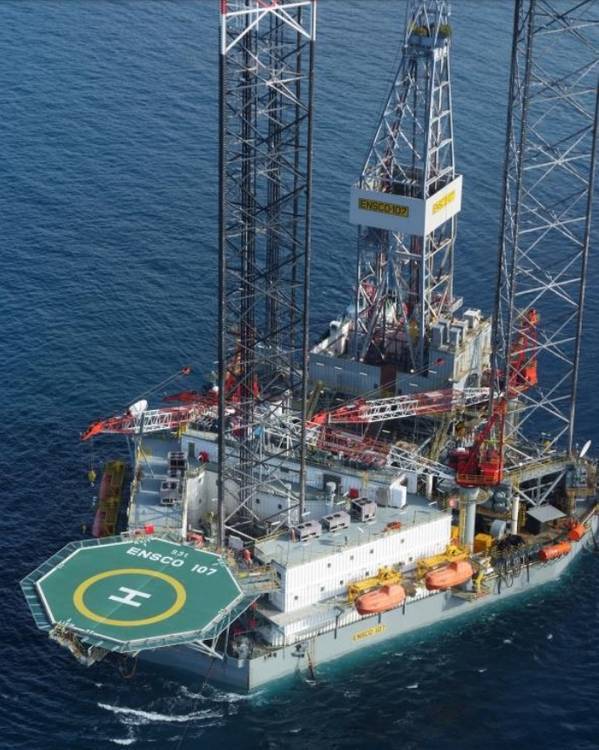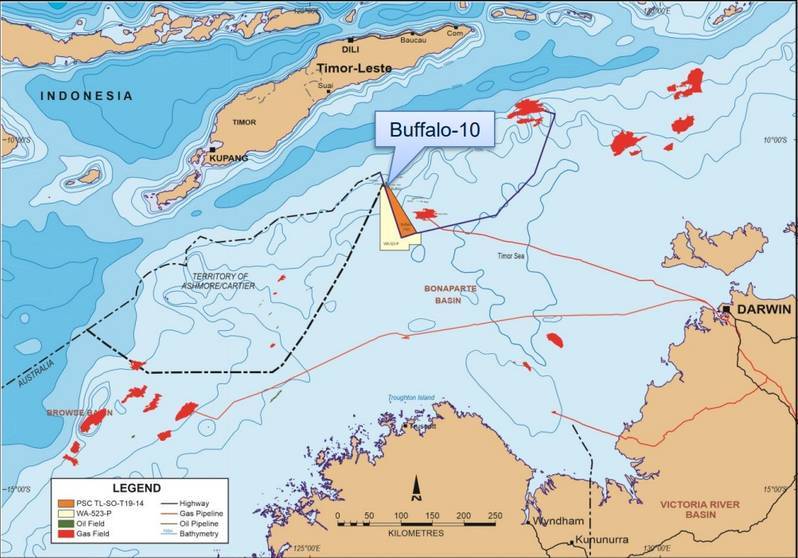
Australian oil and gas company Carnarvon Energy said Monday its closely watched Buffalo-10 well in Timor Sea had failed to unearth commercial volumes of oil.
The company said that the wireline logging operations have been completed with the oil column deemed to be residual and uncommercial.
"The well will be left in a safe condition and the rig demobilized," the company said. The well was drilled with the Valaris JU-107 jack-up rig.
Carnarvon Energy Managing Director and CEO, Mr Adrian Cook, said: “The results from Buffalo-10 well are disappointing for the Carnarvon team and shareholders, but now our attention moves to the commencement of the high impact Pavo-1 and Apus-1 exploration wells within the
next month in the Bedout basin. "
The Buffalo-10 well was drilled offshore Timor-Leste in the TL-SO-T 19-14 PSC in which Carnarvon holds a 50% interest. The remaining 50 percent is held by Advance Energy.
Disappointing and hugely surprising
Leslie Peterkin, CEO of Advance Energy, said:"The results of B-10 are both disappointing and hugely surprising given the independently verified risk assessment which confirmed a highly likely commercial outcome from the well. Across the JV, we invested a significant amount of technical work into the project which underpinned our high degree of confidence that the well would unlock the significant value of the field.
"The post-well evaluation indicates that the well was drilled into the hanging wall of a fault, although uncertainty in seismic resolution also contributed to the reservoir being significantly deeper than expected at this location. It is not the case that this result means that all of the attic oil volumes certified by RISC have been negated. The Buffalo Joint Venture will conduct further technical analysis in the coming weeks to fully understand why the attic was not encountered as prognosed at the drilled location."
We believe it is likely that the JV will relinquish the Buffalo asset as neither company wishes to fund a second appraisal well in the field.
Looking ahead, Advance Energy remains funded for the immediate near-term and the team has been working on a pipeline of identified, attractive opportunities. We will now turn our full attention to bringing at least one of these to fruition this year. These are value accretive opportunities and include an opportunity with cash flow, which would be suitable for debt or vendor financing. Our immediate priority will be to significantly reduce costs while we assess the next steps for the growth of the Company."
The Buffalo field was discovered in 1996 by BHP and produced from 1999 to 2004, with the last well, Buffalo 9, drilled in 2002. In 2005 the lease on the FPSO ended, and coupled with declining production rates, increasing water cut, and decreasing gas availability for gas-lift, the field was abandoned. All wells were plugged and abandoned, and the infrastructure removed.
Carnarvon was awarded the WA-523-P permit, which included the previously developed Buffalo field, in May 2016 for an initial six-year term.
The Buffalo project was originally situated in Australian waters, but in 2018, the Australian and Timor-Leste governments signed a maritime boundary agreement that changed the maritime boundary between the two countries, affecting the WA-523-P permit that contains the Buffalo project.
The WA-523-P exploration permit was split in two with a portion containing the Buffalo oil field changing from its Australian jurisdiction to being exclusively in the East Timor jurisdiction. The Buffalo field is located in Timor-Leste in the TL-SO-T 19-14 PSC.
The Buffalo-10 well was drilled in around 30 meters of water depth, to test for the presence of commercial quantities of hydrocarbons (oil) that would have ultimately resulted in a re-development of the field in case of success.
Seismic work conducted prior to drilling had led Carnarvon to estimate contingent resources in the Buffalo oil field of 31.1 million barrels (2C), with low estimates of 15.3 million barrels (1C) and high estimates of 47.8 million barrels (3C), and Carnarvon had said that there was a strong likelihood the Buffalo-10 well will confirm an economic project, however, this is now no longer the case.